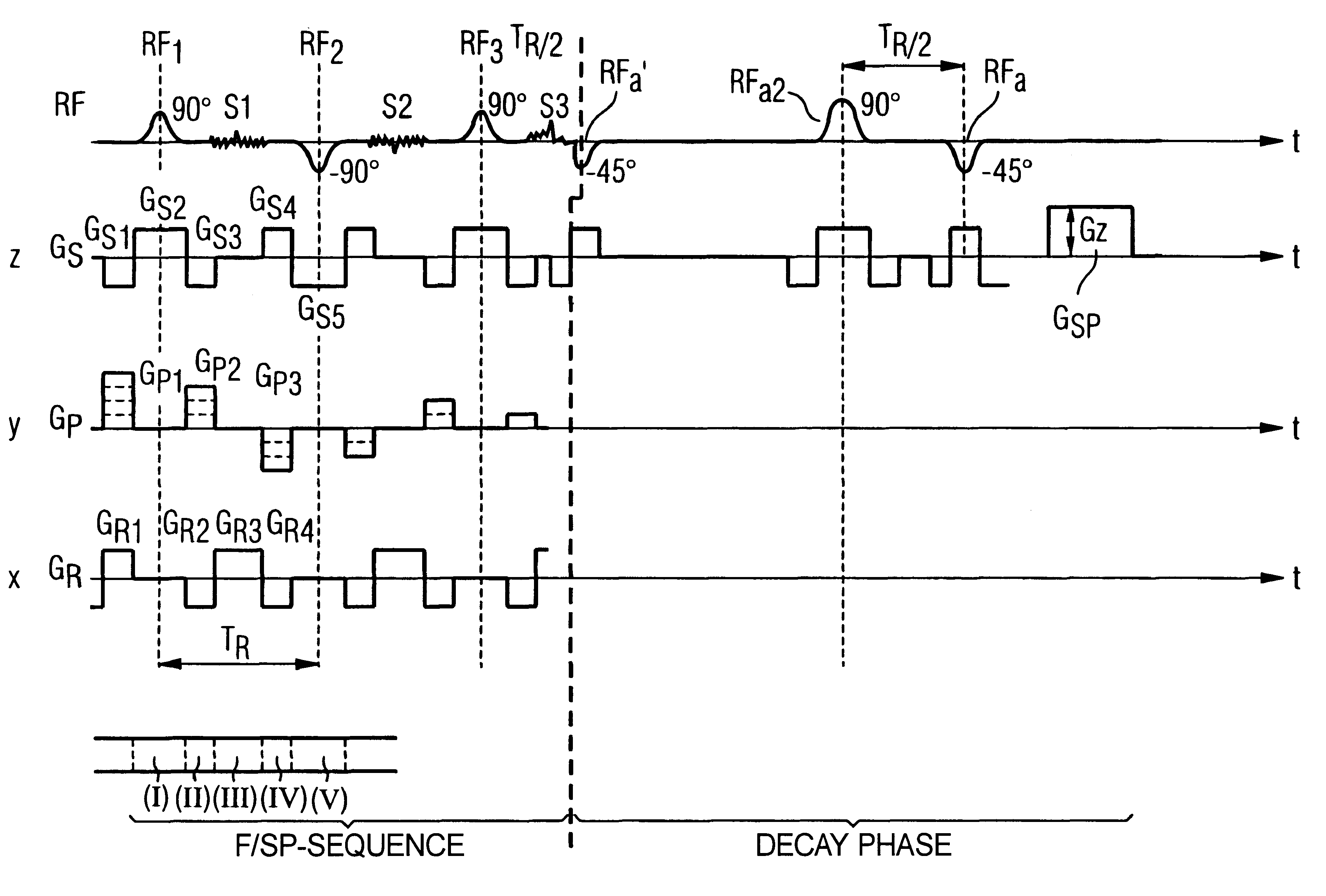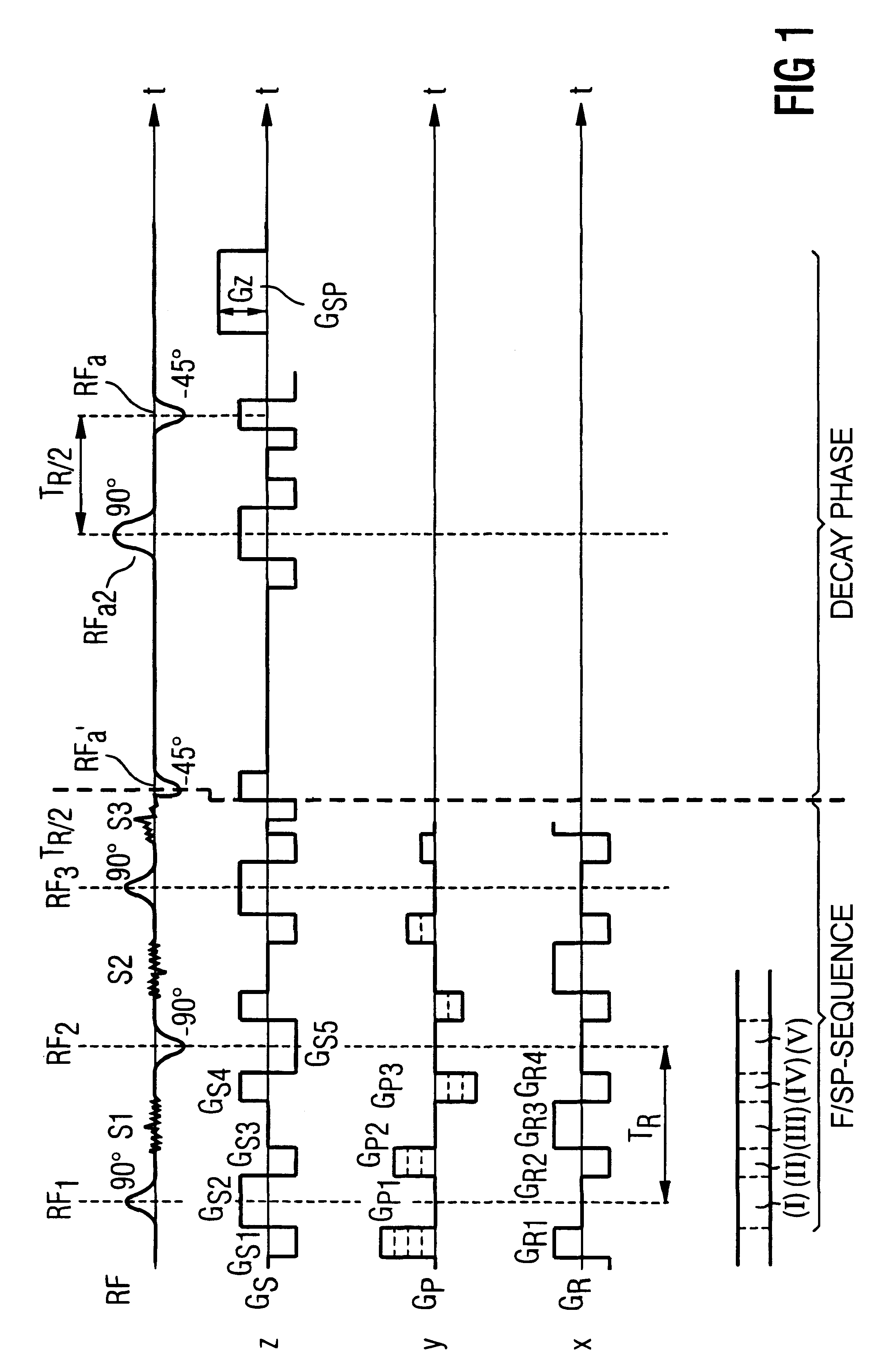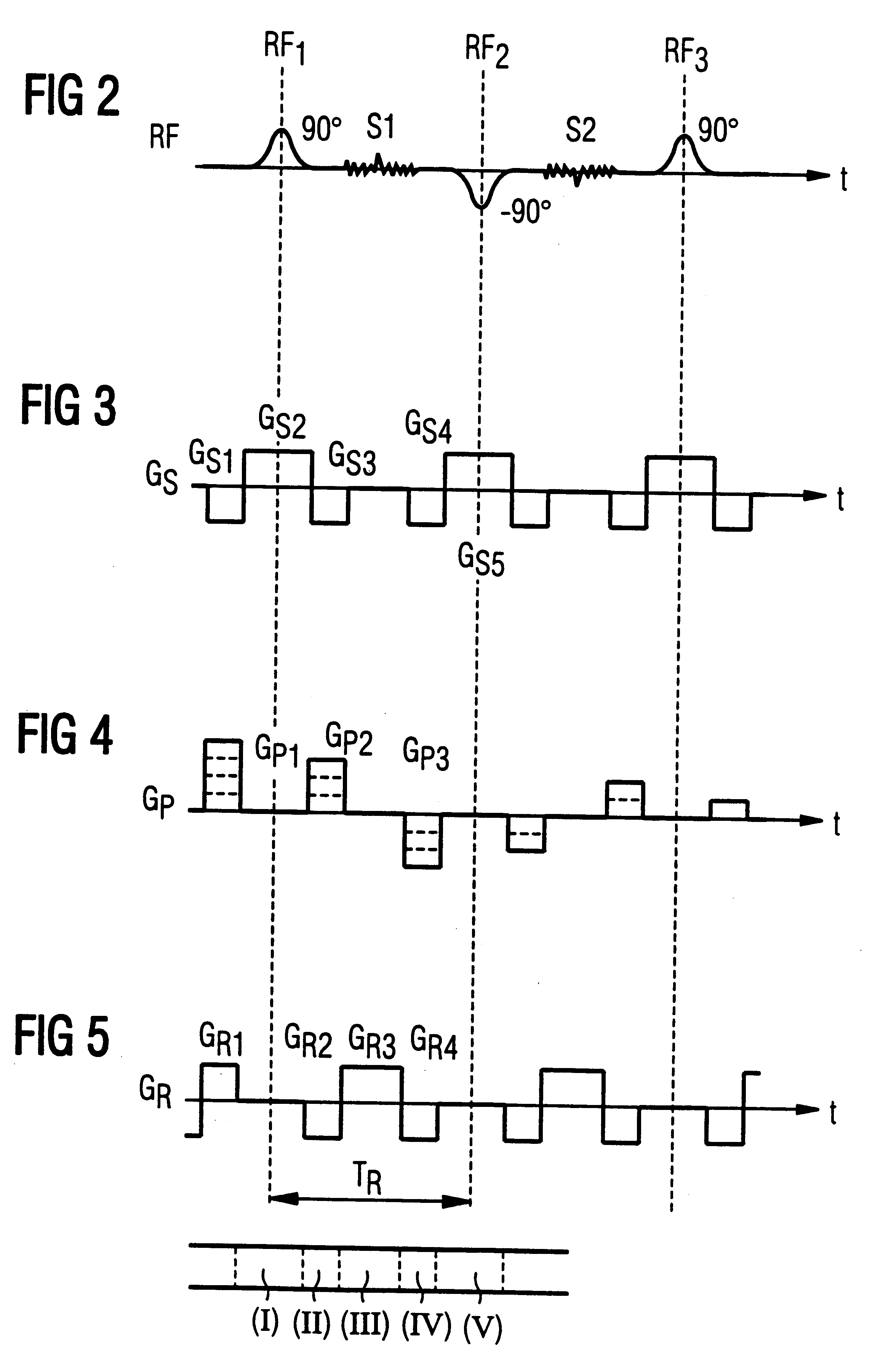Magnetic resonance tomography apparatus and operating method allowing multiple scans in rapid succession
a tomography and magnetic resonance technology, applied in the pulse sequence field, can solve problems such as image artifacts and image artifacts
- Summary
- Abstract
- Description
- Claims
- Application Information
AI Technical Summary
Benefits of technology
Problems solved by technology
Method used
Image
Examples
Embodiment Construction
With reference to FIGS. 2 through 5, a sequence known as a TRUE-FISP (Fast Imaging with Steady Precision) sequence is explained first. Each sub-sequence begins with a radio-frequency excitation pulse RF.sub.1 in a time segment 1, this exhibiting a flip angle of 90.degree. in the exemplary embodiment. The radio-frequency pulse RF.sub.1 is emitted frequency-selectively and under a slice selection gradient pulse GS2, so that only a selected slice of the examination subject is excited. In a time segment II, a dephasing of the nuclear magnetization ensues in a readout direction with a gradient G.sub.R2. Further, in time segment II, a phase coding gradient pulse G.sub.P2 as well as a gradient pulse GS.sub.3 directed opposite the slice selection gradient GS.sub.2 are emitted. As a result of the gradient pulse GS.sub.3, the dephasing caused by the slice selection gradient pulse GS.sub.2 is in turn compensated.
In time segment III, a read out gradient pulse G.sub.R3 is activated, and thus a r...
PUM
 Login to View More
Login to View More Abstract
Description
Claims
Application Information
 Login to View More
Login to View More - R&D
- Intellectual Property
- Life Sciences
- Materials
- Tech Scout
- Unparalleled Data Quality
- Higher Quality Content
- 60% Fewer Hallucinations
Browse by: Latest US Patents, China's latest patents, Technical Efficacy Thesaurus, Application Domain, Technology Topic, Popular Technical Reports.
© 2025 PatSnap. All rights reserved.Legal|Privacy policy|Modern Slavery Act Transparency Statement|Sitemap|About US| Contact US: help@patsnap.com



